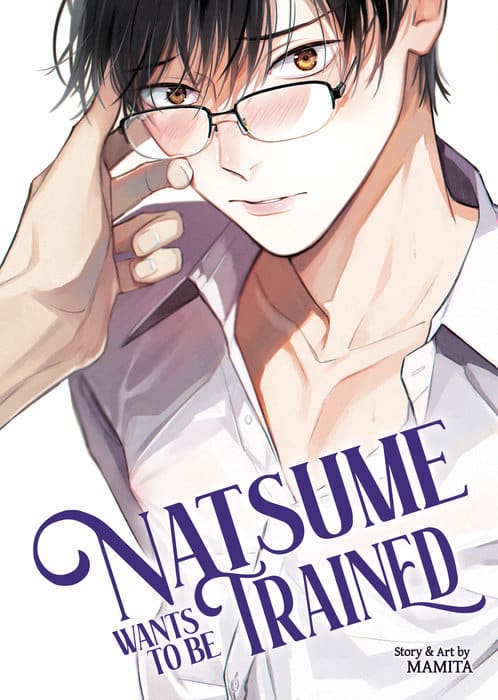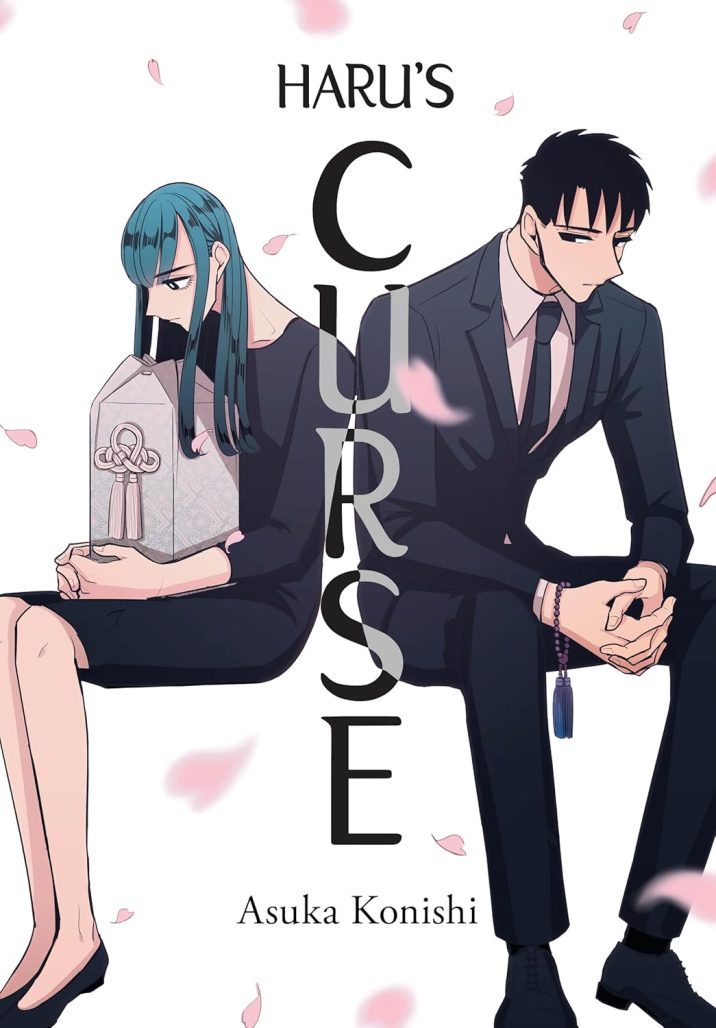With more people reading manga and Webtoons (aka vertical scroll comics) than ever before, Beat’s Bizarre Adventure gives three writers an opportunity each week to recommend some of their favorite books and series from Japan, Korea, and elsewhere. This week we have the master of sex, an arranged marriage road trip, and, of course, Shinzo Abe.
Natsume Wants to Be Trained
Writer/Artist: Mamita
Translation: Caroline Winzenried
Lettering: Ray Steeves
Logo & Cover Design: Mariel Daga
Copy Editor: B. Lillian Martin
Proofreader: Joshua Hardy
Production Designer: George Panella
Editor: McKenzie Carnahan
Publisher: Seven Seas
I’ve been wanting to read other Mamita works since finishing 10 Things I Want to Do Before I Turn 40. Contrary to its sadomasochistic title, Natsume Wants to Be Trained is a surprisingly sweet story about self-love.
After his boyfriend broke his heart by complaining that he was bad at sex, Natsume is determined to improve his skills in the bedroom. So he calls up a call boy company, because if you’re going to learn how to be the master of sex, you gotta find the best. To his surprise, “Kou” is none other than his housekeeper! Natsume’s first instinct is to call the whole thing off. But when Natsume confides in Kou, instead of the ridicule and humiliation that he expects, he finds compassion, comfort, and protectiveness.
The premise seems a bit silly, especially since it’s about a character who wants to get better at sex for revenge. But Natsume’s self-esteem really was destroyed by someone who didn’t care if he hurt his partner’s feelings. Kou’s reminder that sex is a two-way street, and that both partners deserve to feel good, was something Natsume needed to hear. Eventually his feelings for Kou become less transactional and more emotional and romantic. Kou, who has always prided himself on keeping his personal and work life separate, finds his boundaries blurring as he starts acting more like a boyfriend and less like a housekeeper/call boy.
The part I liked the most was the scene where Natsume got closure with his previous boyfriend. Although it does not excuse what Natsume’s ex said to him, hearing his explanation made him less one-dimensional. Just like sex is a two-way street, communication is also a two-way street.
By contrast, I would’ve loved to see more development of Natsume and Kou’s relationship before they became official. The jump from Natsume’s talk with his ex to becoming Kou’s boyfriend was a little too sudden. But there is a second volume coming out soon, so I’m hoping that we see them develop there. — Hilary Leung
Haru’s Curse
Writer/Artist: Asuka Konishi
Translation: Hannah Airriess
Production: Risa Cho, Lorina Mapa
Editor: Daniel Joseph
Publisher: Kodansha
Natsumi and Haru. Two sisters close in age who couldn’t be any farther apart in their temperaments. Still, they mean the world to each other and rely on one another given their strict and emotionally unavailable parents. They have no way of knowing that their happy and hopeful bubble will burst one day.
The Hiragi family imposes an arranged marriage between their son Togo and the Tachibana family’s younger sister Haru. Togo and Haru start dating, only for Haru to pass away after a long period of hospitalization before the wedding. As if the weight of Haru’s passing wasn’t soul-crushing enough, Togo approaches Natsumi during the funeral, letting her know that his family decided he would date Natsumi. She accepts, but on one condition: he is to take Natsumi to each and every place he visited while dating Haru.
Haru’s Curse was the English-language debut of Asuka Konishi, who is best known for their yakuza romance Yakuza Fiancé: Raise wa Tanin ga Ii. This 2-in-1 omnibus explores familial love in its many facets. Dependency, adoration, admiration, and unspoken jealousy. It is a story of what comes after the passing of not only a beloved sister, but also a trusted friend. Tracing the life she led with the “outsider”: the places she’s visited, the sights she’s seen, the sounds and smells she’s experienced and the emotions she’s felt without Natsumi.
As much as Haru’s Curse is about family, it’s also about romantic feelings and their intersection with expectations. The story moves forward in time, but simultaneously moves back as Natsumi discovers sides to Haru she didn’t know. At the same time, she comes to terms with her own long-brewing emotions.
Togo is an enigma for the reader as much as he is for Natsumi. Until the end of the first half, his position within this complicated web of relationships isn’t very clear. He does have his own baggage to deal with and feelings to resolve. With Haru’s presence weighing on their shoulders, Togo and Haru try to come out of this messy tangle as unscathed as they possibly can.
I didn’t finish this series when I first bought it digitally. I don’t remember what didn’t work for me, but I also have no idea what prompted me to buy it physically years later. “Dopamine shopping”, as the kids say these days. I’m glad I did, because I really enjoyed Haru’s Curse the second time! Asuka Konishi’s stylized character designs might throw off the average reader, but I find them to be expressive and cute. If you enjoy stories about characters with problems that don’t have clear-cut solutions, Haru’s Curse is for you. — Merve Giray
Flash Point
Writer/Artist: Imai Arata
Translation: Ryan Holmberg
Editing: Ryan Holmberg & emuh ruh
Lettering: Lauren Eldon
Design: emuh ruh & Imai’s wife
Publisher: Glacier Bay Books
Flash Point is a manga in which two ordinary people accidentally photobomb Shinzo Abe’s assassination in 2022. That one sentence should be enough to either convince you to buy the book immediately or never ever touch it. But that wouldn’t be enough to fill my allotted word count. So, how do you even describe a book like this?
There are a couple of instances from the past few years that stick in my memory to this day. One of them was when a gunman broke into a pizza shop down the street from my workplace in an attempt to liberate what he thought was a secret torture basement full of children. (This basement did not exist.) The street went into lockdown; my colleagues barricaded themselves in their offices with furniture. Customers fainted during evacuation. Thankfully, we all survived.
There’s a scene near the end of Flash Point where our protagonist Imai and his wife Miki are saved from an angry mob by Kono Taro, a member of the House of Representatives. Taro has a very high opinion of himself. When Imai pushes back a bit, Taro snaps: “Have some respect, punk! Have you not seen the posts accusing me of running a human trafficking ring through a pizza parlor below Disneyland?!” He then helps Imai and Miki escape in a hot air balloon shaped like Shinzo Abe’s face.
This is a ridiculous turn of events. And yet, reading it, I couldn’t help but think, “Imai Arata gets it.” Our reality is one of constant escalation, in which each absurd event is soon eclipsed by the next. We are all increasingly desensitized in the face of history’s running gags, frantically grasping for meaning amid sound and fury cast by the lightning of past choices.
Flash Point is a more accessible comic than F, Imai Arata’s previous manga molotov cocktail. It has characters. It has jokes. Yet it still feels dangerous, as if it were an execution video you stumbled upon while browsing social media. Isn’t that life these days, though? I appreciate Arata’s honesty. Plus, Flash Point is a yuri story too, which I was not expecting but will happily take. — Adam Wescott
Follow Beat’s Bizarre Adventure to get weekly manga and webtoon recommendations!














